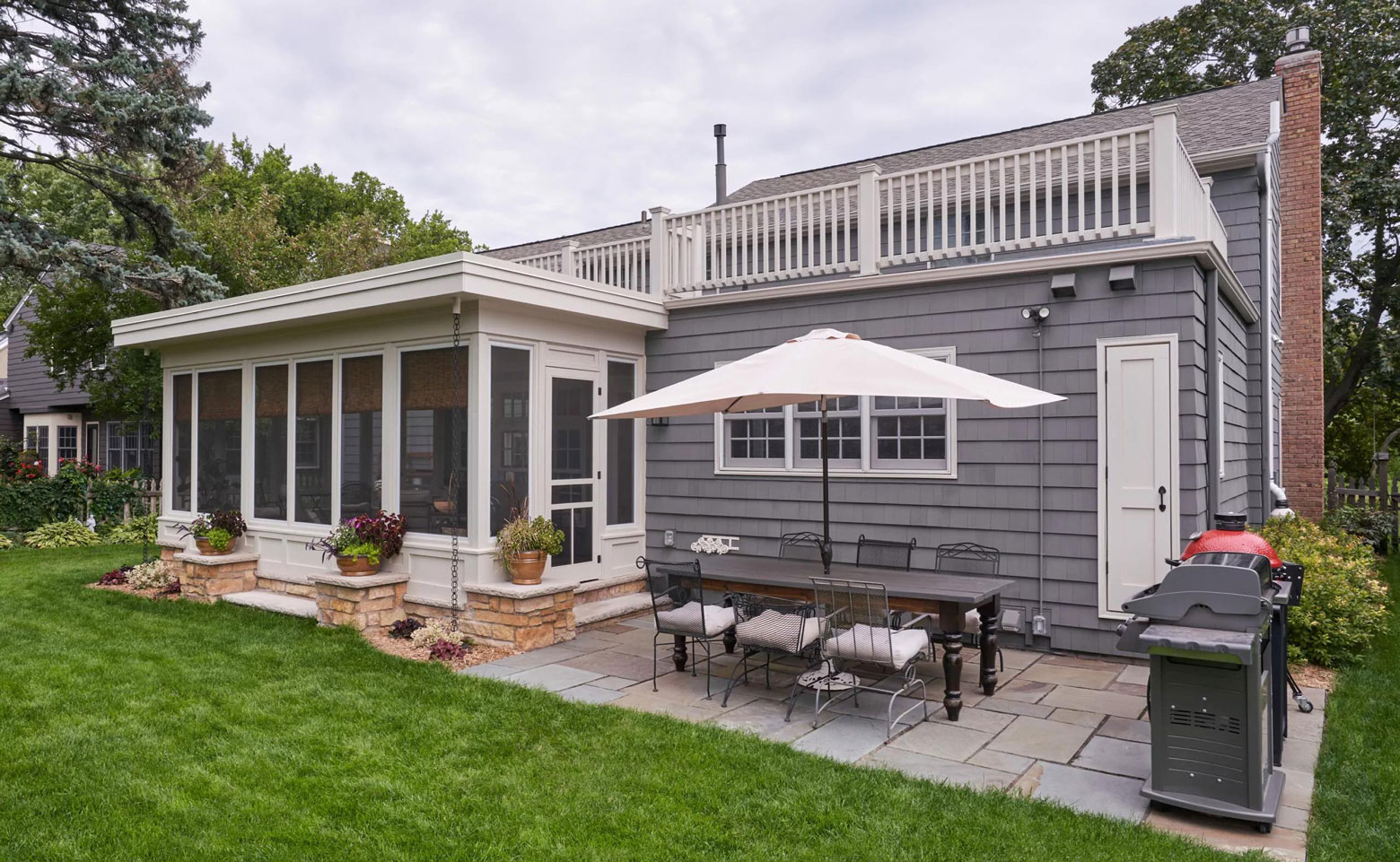Planning to renovate your entire home or add functionality to an outdated or underutilized space? Good news! You now have a unique opportunity to incorporate eco-friendly home improvements to help lower energy consumption and reduce carbon emissions.
By upgrading insulation, replacing older windows, or installing electric appliances, you can easily make a positive impact on your home and the planet without sacrificing comfort. Many of these updates can also save you money in the long run. Below we’ll explore how to design an eco-friendly home remodel with a few essential considerations—and a little Bluestem creativity.
Before we dive in, let’s first address a few important definitions.
Embodied Carbon: This refers to the amount of carbon dioxide (CO2) emitted during the production and transportation of building materials and the construction process itself. It’s a critical factor in assessing the environmental impact of your building or renovation project.
Life-cycle Carbon: Life-cycle carbon encompasses the carbon emissions associated with the operation and maintenance of the home over its lifespan, including energy consumption, water consumption, and waste generation.
Today, as carbon emissions are pushing our climate towards a tipping point, it is more important than ever to reduce the carbon emissions it takes to do your remodel than to reduce the long-term carbon savings. In other words, if you must make a choice, watch the embodied carbon FIRST.

Tips for creating a green home:
Did you know that remodeling your home is already eco-friendly? Instead of building a new one from scratch, you’re focusing on repurposing existing materials. And the more you can use what’s already available and avoid throwing things away, the better it is for our environment.
So, if you’re remodeling, you’re already on the right track! The next part is to find creative ways to work within the restrictions of existing homes to reduce carbon emissions – without sacrificing aesthetics, comfort, and affordability.
Here are a few ideas to consider:
Less Is More: When it comes to eco-friendly remodeling, less really is more. What is the most discrete remodel you can do that will meet your household’s needs? Are there pieces of your existing home that it makes sense to leave as is, or maybe just update with a simple coat of paint?
Reuse Materials: Using existing materials like wood flooring can create beautiful and functional spaces. Sanding down and re-staining flooring will give it a fresh look without consuming new resources.
Reduce Concrete Use: In building a new home, concrete can contribute 30% of the embodied carbon. When remodeling, however, we have a unique opportunity to reduce the amount of concrete used in the project. Some of the ways we can achieve this are by not expanding the foundation, using alternative foundation materials (such as permanent wood foundations), using new alternative concrete products and only using concrete where absolutely necessary.

Limit Foam Use: Using foam only where necessary reduces the overall use of materials and minimizes the environmental impact. Also, foam products vary significantly in embodied carbon. Foam can be used strategically in specific applications, such as insulation below grade (or in the rim area of an older home), to improve energy efficiency and comfort. By avoiding the overuse of foam, you can conserve resources and promote sustainable building practices.
Prioritize Energy Efficiency: If you are already making upgrades, or if your home is drafty, uncomfortable and expensive to heat, you have a great opportunity to improve your comfort and decrease your carbon footprint. Air sealing, proper insulation, energy-efficient windows and electric appliances can go a long way in both reducing your carbon footprint and saving you money!
Creating an eco-friendly home with Bluestem Remodeling:
At Bluestem Remodeling, we know how to make informed, creative recommendations that minimize environmental impact while meeting your needs. Our team of experts can help you select the right materials, incorporate energy-efficient features, and design a home that’s both functional and beautiful.
And the best part? You’ll be making a positive impact on the environment by reducing carbon emissions. Let us guide you through the process of building an eco-friendly home that’s perfect for you!





